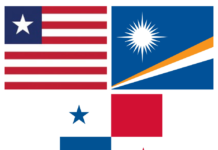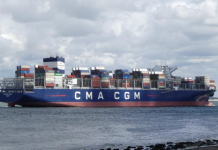
The South Korean government has set aside KRW470 billion (US$382 million) in emergency funding for mainline operator HMM as the maritime industry faces another crisis in the form of the Covid-19 pandemic.
The funds are part of a wider KRW1.25 trillion (US$1.01 billion) fund announced by the Ministry of Oceans and Fisheries (MOF) on 23 April 2020, to help South Korean ship owners and shipbuilders tide over the crisis, which has disrupted supply chains and shipping demand.
Funds allotted to HMM will be assigned by its two largest shareholders, the state lenders Korea Development Bank and Korea Ocean Business Corporation.
MOF minister Moon Sung-hyuk said, “When considering the characteristics of the shipping industry, which has a time lag between global economic deterioration and decreased sales, financial damage is expected to increase after the second quarter of 2020. This measure proactively provides liquidity to shipping companies.”
The relief package coincides with HMM taking delivery of the first of a dozen 24,000TEU container ships that were ordered from Daewoo Shipbuilding & Marine Engineering (DSME) and Samsung Heavy Industries.
HMM Algeciras, the world’s largest containership, was christened on the same day at the DSME’s Okpo shipyard in Geoje.
South Korean President Moon Jae-in was among the 160 dignitaries attending the event.
President Moon said, “For me, it is very meaningful that HMM takes delivery of the most technologically advanced containership in this difficult time. I would like to celebrate it and hope that HMM continues to secure a competitive advantage as a South Korean national flagship carrier.”
All the 24,000TEU ships are expected to be delivered to HMM by September 2020, and the company will begin taking delivery of eight 16,000TEU ships from Hyundai Heavy Industries from the second quarter of 2021.
The ships are equipped with scrubbers to comply with the IMO 2020 environmental regulation. Optimised hull design and efficient engines are also expected to have improved energy efficiency and reduce carbon emissions.
Martina Li
Asia Correspondent





